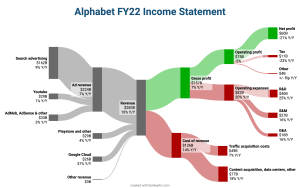
Let’s be honest—crypto isn’t for the faint of heart. For institutional investors, the stakes are even higher. Billions flow through decentralized networks, smart contracts, and cold storage wallets. But with great opportunity comes… well, great risk. That’s where crypto insurance and risk management step in—like a seatbelt in a race car.
Why Crypto Insurance Isn’t Just a “Nice-to-Have”
Imagine this: A hedge fund stores $200M in Bitcoin across multiple exchanges. Then—poof—a hack drains half of it. Without insurance? That’s a $100M write-off. Ouch. Traditional asset managers have FDIC, SIPC, or Lloyd’s of London. Crypto? It’s still the Wild West, but insurers are catching up.
Key pain points for institutions:
- Exchange failures (remember FTX?)
- Private key theft (phishing, insider jobs)
- Smart contract exploits (DeFi’s Achilles’ heel)
- Regulatory gray zones (who pays if a government seizes assets?)
How Crypto Insurance Works (When It Works)
Unlike traditional policies, crypto coverage is patchy. Most insurers won’t touch volatile assets—or demand eye-watering premiums. But specialized players like Coinbase Custody, Evertas, and Lloyd’s syndicates now offer tailored solutions. Here’s the deal:
1. Custodial Insurance
Covers assets held by third-party custodians (think cold storage vaults). Policies often cap payouts—say, $500M per breach—with strict security audits.
2. Smart Contract Cover
DeFi’s dirty secret? Code flaws. Some insurers now underwrite exploits, like the $325M Wormhole hack. But—big but—they’ll pore over audits first.
3. Crime & Theft Policies
Protects against SIM swaps, ransomware, or rogue employees. Often requires multi-sig wallets and hardware security modules (HSMs).
The Fine Print: What’s Not Covered
Here’s where institutions get tripped up. Crypto insurance has more loopholes than a poorly coded NFT project. Common exclusions:
- Market crashes (sorry, no bailouts for FOMO)
- Lost passwords (self-custody means self-responsibility)
- Protocol failures (if a blockchain halts, insurers won’t reboot it)
- Regulatory seizures (governments still play by their own rules)
Beyond Insurance: Risk Mitigation Strategies
Insurance is just one piece. Smart institutions layer defenses like a crypto lasagna:
- Diversify storage: Mix hot wallets, cold storage, and MPC (multi-party computation) tech.
- On-chain monitoring: Tools like Chainalysis track abnormal flows in real-time.
- Red team drills: Hack your own systems before attackers do.
- Legal wrappers: SPVs or trusts can isolate crypto exposure.
The Future: More Products, More Problems?
As crypto matures, so does insurance. Parametric policies (payouts triggered by verifiable events) and reinsurance pools are emerging. But with 95% of crypto still uninsured, demand outstrips supply. And let’s not forget—insurers hate uncertainty. Until regulators clarify rules, coverage will stay fragmented.
Institutional investors face a choice: accept the risk or overpay for peace of mind. Either way, one truth remains—trustless systems still need trusty safeguards.







